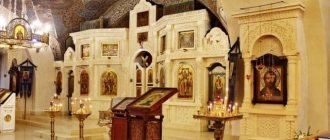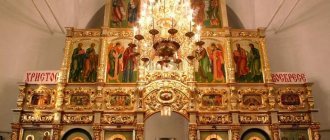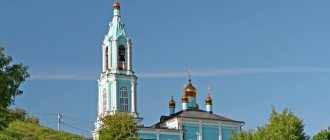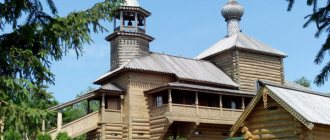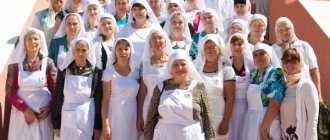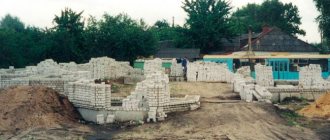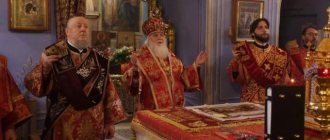Mir
Russia Sevastopol Orlovka village Temple of Equal-to-the-Apostles Constantine and Helen in Orlovka (Sevastopol) Map is loading…
{"format":"leaflet","minzoom":false,"maxzoom":false,"limit":50,"offset":0,"link":"all","sort":[""], "order":[],"headers":"show","mainlabel":"","intro":"","outro":"","searchlabel":"\u2026 \u0441\u043b\u0435\ u0434\u0443\u044e\u0449\u0438\u0435 \u0440\u0435\u0437\u0443\u043b\u044c\u0442\u0430\u0442\u044b","default":"","import-annotation":false,"width ":"auto","height":"350px","centre":{"text":"","title":"""link":"""lat":44.72876000000000118461684905923902988433837890625,"lon": 33.5687759999999997262420947663486003875732421875,"icon":""},"title":"","label":"","icon":"","lines":[],"polygons":[],"circles":[ ],"rectangles":[],"copycoords":false,"static":false,"zoom":8,"defzoom":14,"layers":["OpenStreetMap"],"image layers":[] ,"overlays":[],"resizable":false,"fullscreen":true,"scrollwheelzoom":true,"cluster":false,"clustermaxzoom":9,"clusterzoomonclick":true,"clustermaxradius":80, "clusterspiderfy":true,"geojson":"","clicktarget":"","showtitle":true,"hidenamespace":false,"template":"","userparam":"","activeicon": "","pagelabel":false,"ajaxcoordproperty":"","ajaxquery":"","locations":[{"text":"\u003Cb\u003E\u003Ca href=\"/palomnik/%D0% A5%D1%80%D0%B0%D0%BC_%D1%80%D0%B0%D0%B2%D0%BD%D0%BE%D0%B0%D0%BF%D0%BE%D1%81% D1%82%D0%BE%D0%BB%D1%8C%D0%BD%D1%8B%D1%85_%D0%9A%D0%BE%D0%BD%D1%81%D1%82%D0% B0%D0%BD%D1%82%D0%B8%D0%BD%D0%B0_%D0%B8_%D0%95%D0%BB%D0%B5%D0%BD%D1%8B_%D0%B2_% D0%9E%D1%80%D0%BB%D0%BE%D0%B2%D0%BA%D0%B5_(%D0%A1%D0%B5%D0%B2%D0%B0%D1%81%D1 %82%D0%BE%D0%BF%D0%BE%D0%BB%D1%8C)\» title=\»\u0425\u0440\u0430\u043c \u0440\u0430\u0432\u043d\u043e\u0430\ u043f\u043e\u0441\u0442\u043e\u043b\u044c\u043d\u044b\u0445 \u041a\u043e\u043d\u0441\u0442\u0430\u043d\u0442\u0438\u043d\u04 30\u0438\u0415\u043b\u0435\ u043d\u044b \u0432 \u041e\u0440\u043b\u043e\u0432\u043a\u0435 (\u0421\u0435\u0432\u0430\u0441\u0442\u043e\u043f\u043e\u043b\u 044c)\»\u003E\u0425\ u0440\u0430\u043c \u0440\u0430\u0432\u043d\u043e\u0430\u043f\u043e\u0441\u0442\u043e\u043b\u044c\u043d\u044b\u0445 \u041a\u0 43e\u043d\u0441\u0442\u0430\ u043d\u0442\u0438\u043d\u0430 \u0438 \u0415\u043b\u0435\u043d\u044b \u0432 \u041e\u0440\u043b\u043e\u0432\u043a\u0435 (\u0421 \u0435\u0432\u0430\u0441\u0442 \u043e\u043f\u043e\u043b\u044c)\u003C/a\u003E\u003C/b\u003E\u003Chr /\u003E\u003Ca href=\"/palomnik/%D0%A1%D0%B2%D0%BE% D0%B9%D1%81%D1%82%D0%B2%D0%BE:%D0%90%D0%BD%D0%BD%D0%BE%D1%82%D0%B0%D1%86%D0 %B8%D1%8F\" title=\"\u0421\u0432\u043e\u0439\u0441\u0442\u0432\u043e:\u0410\u043d\u043d\u043e\u0442\u0430\u0446\u0438\u044f\"\ u003E\u0410\u043d\u043d\u043e\u0442\u0430\u0446\u0438\u044f\u003C/a\u003E: \u043d\u0430\u0445\u043e\u0434\u0438\u0442\u0441\ u044f\u043d\u0430\u0441 \u0442\u0430\u0434\u0438\u0438 \u0441\u0442\u0440\u043e\u0438\u0442\u0435\u043b\u044c\u0441\u0442\u0432\u0430. \u041f\u0440\u0438 \u0445\u0440\u0430\u043c\u0435 \u043f\u043b\u0430\u043d\u0438\u0440\u0443\u0435\u0442\u0441\u044f \u043f \u043e\u0441\u0442\u0440\u043e \u0439\u043a\u0430 \u0434\u0435\u0442\u0441\u043a\u043e\u0433\u043e \u0445\u043e\u0441\u043f\u0438\u0441\u0430. \u0411\u043e\u0433\u043e\u0441\u043b\u0443\u0436\u0435\u043d\u0438\u044f\u0432\u0440\u0435\u043c\u0435\u043d\u043d\u043e\ u0441\u043e\u0432\u0435\u0440 \u0448\u0430\u044e\u0442\u0441\u044f \u0432 \u0441\u0435\u043b\u0435 \u041e\u0441\u0438\u043f\u0435\u043d\u043a\u043e \u043 2\u0431\u044b\u0432\u0448\u0435 \u043c \u043f\u043e\u043c\u0435\u0449\u0435\u043d\u0438\u0438 \u043a\u043b\u0443\u0431\u0430.","title":"\u0425\u0440\u0430\u043c \u0440\u0430 \u0432\u043d\u043e\u0430\u043f\u043e\u0441\u0442\u043e\u043b\u044c\u043d\u044b\u0445 \u041a\u043e\u043d\u0441\u0442\u0430\u 043d\u0442\u0438\u043d\u0430 \u0438 \u0415\u043b\u0435\u043d\u044b \u0432 \u041e\u0440\u043b\u043e\u0432\u043a\u0435 (\u0421\u0435\u0432\u0430\u0441\u044 2\u043e\u043f\u043e\u043b\ u044c)","link":"","lat":44.72876000000000118461684905923902988433837890625,"lon":33.5687759999999997262420947663486003875732421875,"ic on":""}],"imageLayers":[]}
44.72876; 33.568776
Russia, Sevastopol, Nakhimovsky district, Kachinsky municipal district, Orlovka village, Ozernaya street, 1
Orlovka village, Sevastopol
Russia
Telephone:
+7 978 788 94 08
Email:
Temple of Equal-to-the-Apostles Constantine and Helena
is under construction. It is planned to build a children's hospice at the temple. Divine services are temporarily held in the village of Osipenko in the former club premises.
History[edit]
With the blessing of Metropolitan Lazar of Simferopol and Crimea, an Orthodox community was registered in the village of Orlovka: Religious organization “Orthodox Parish Church in the name of the Holy Equal-to-the-Apostles Kings Constantine and Helen, the city of Sevastopol, Simferopol and Crimean Diocese.”
The temple was founded in June 2021. At the site where the temple was built, the clergy laid the capsule and the first stone of the future structure.
The temple was built using modular technology. In Crimea, four more Orthodox churches were built along it.
On August 14, on the Day of the Feast of the Removal of the Honest Trees of the Life-Giving Cross of the Lord, the dean of the Sevastopol church district, Archpriest Sergius Khalyuta, co-served as the rector of the church in the name of Saints Equal-to-the-Apostles Constantine and Helen. Orlovka Archpriest Alexander Bondarenko performed a prayer service before installing a cross on the dome of the church under construction.
Shrines of Jerusalem: Catholicon and Temple of Saint Helena
Pilgrimage invites you to visit the Holy Land (8 days / 7 nights). Departures every Friday.
Greek Katholikon
Opposite the entrance to the Edicule is the Triumphal Arch, opening the space of the Catholicon. The lintel under it (made of the same pink marble with which both the Edicule and the Orthodox throne of Golgotha are decorated) contains - from the side of the Catholicon - the Greek inscription: “Rejoice, O Zion, Holy Mother of the Churches of God!”
To the left and right, facing the Edicule, in the aisle of the arch there are small balconies, on which in the pre-revolutionary period consuls and other honorary representatives of the two main Orthodox powers - Russia and Greece - were located during ceremonial services.
"Katholikon" means "cathedral temple" in Greek. We said above that the temple complex of the Holy Sepulcher initially consisted of several separate sanctuaries. We have already examined the history of the Rotunda, which directly contains the Edicule, as well as Golgotha with its Orthodox and Catholic side chapels. The third element of the complex is the cathedral church of the Jerusalem Orthodox Patriarchate. The Crusader Temple united the three named objects in a single internal space. Today we can get an idea of it only by lifting our heads high under the arched vaults of the 12th century. The fact is that the fire of 1808 led not only to the reconstruction of the Rotunda and Edicule, but also to the redevelopment of the entire architectonics of the building. When restoring the temple, Greek architects “fenced off” the “middle” volume inside it with special walls that did not reach the vaults, which is now called the Katholikon.
At the same time, one involuntarily recalls the famous saying of one of the remarkable Russian Orthodox hierarchs of the 19th century: “Our (with Catholics) religious barriers do not reach heaven.” In the Church of the Holy Sepulcher they do not even reach the vaults of Master Jourdain. Anyone who would like to imagine how the temple was visible through and easily breathed before the appearance of these “religious partitions”, often literally attached to the old capitals of the crusaders, should go to New Jerusalem near Moscow. Its Resurrection Cathedral, built by Patriarch Nikon in the mid-17th century, almost exactly reproduces the Church of the Holy Sepulcher - the way it looked in Nikon’s time. It turned out that the original - the Jerusalem Temple - was rebuilt and changed (primarily during the renovation of 1810), while the Russian copy retained its internal appearance unchanged.
The architectural history of temples is often controversial. The architectural and aesthetic moment gives way to the requirements of the temple and liturgical. From the point of view of spatial unity, the Greek restructuring certainly destroyed the author's intention. High side walls and a high iconostasis appeared. But from a liturgical point of view, on the contrary, the unity of the temple space was achieved and the necessary prayer atmosphere was created for the Orthodox believers participating in the service.
The dome of the Catholicon - this is the second, smaller, of the two domes of the Holy Sepulcher, visible from everywhere - is not located above the very center, but above the western part of the temple. But this is a “center” in a completely different, much deeper sense. The earth’s axis passes through this dome, and a small marble hemisphere on a special vase-stand, placed exactly under the dome, marks a place called “mesomphalos” - “Navel of the Earth”. As the Psalmist said, “God, my King from everlasting, who arranges salvation in the midst of the earth!” (Ps. 73:12).
But if the idea of Jerusalem as the center of the earth is a thousand years older than Christianity, if the idea of Golgotha, on which the Lord “brought salvation in the midst of the earth,” is the property of patristic and liturgical Orthodox writing, if on medieval maps Jerusalem really marked the middle of the “circle of the earth,” then the described marble flowerpot appeared in the temple no earlier than the restoration and restructuring in 1810. In addition, the Orthodox view does not imply (unlike, for example, the occult) any “physical” or “cosmic” content in the concept of “navel of the earth” . The important thing is that for a Christian today the focal point of peace and history is here, at the life-giving shrines of Golgotha and the Holy Sepulcher.
In church-canonical terms, the Katholikon, or Church of the Resurrection, is the cathedral of the Jerusalem Patriarchate. In the decoration of the temple, this is expressed by the presence of two throne seats in its eastern part: the throne of the Patriarch of Jerusalem at the southern pillar and the patriarchal governor at the northern one. In the dome, the mosaics of which we have already talked about, a blessing Pantocrator is depicted, surrounded by the Mother of God and John the Baptist (on the east and west sides), and the archangels Michael and Gabriel (on the north and south). Between them are 12 saints. In the openings between the eight windows and the drum there are niches with seraphim and cherubs. The Greek inscription says that the work was completed under His Beatitude Patriarch Diodorus in 1994.
The eastern part of the temple is occupied by a large semicircle of the altar. The appearance of the apse, which has not changed since the times of the Crusaders, is clearly visible from a distance - from the Ethiopian monastery on the roof of the Church of St. Helena. Above the iconostasis is a gallery with three small balconies protruding into the church, from where, according to the ancient Byzantine rule, the deacon should read the Gospel. The entire eastern part of the Catholicon, including the iconostasis, the solea with four steps, six columns on it, the northern and southern entrances, is a single ensemble of pink marble. As for the interior, the unusual architecture of the temple gives pilgrims a unique opportunity for an Orthodox altar to “look” into it from above: from the gallery of the Calvary chapel, the altar of the Catholicon is almost completely visible.
Chapels surrounding the Catholicon
The Catholicon, like the Rotunda, is surrounded by spacious galleries that house several chapels.
Continuing the detour we interrupted and passing by the “expressionist” throne of Mary Magdalene described above, we move from the “era of modernism” to the completely archaic – to the northern gallery of the temple. This place is called the Maiden's Arcade. By looking up, you can confirm that you are indeed passing under the arcades. Huge, tetrahedral, with semi-columns protruding on each side, powerful pillars supporting high vaults of the 12th century, interspersed with round columns, between which stands out a white marble fragment - the only one of its kind in the entire temple. There is no evidence of who and when first called this gallery “Arcades of the Virgin”. The meaning of the name can be explained “topographically”: we pass through the gallery from the Franciscan Church of the Appearance of Christ to the Virgin Mary to the Orthodox chapel, also dedicated to the Mother of God. It is believed that of the seven columns located here, the four central ones, and possibly the mentioned fragment of the pillar, belong to the Triporticus of Constantine, that is, to the second internal atrium of the original basilica of 335, separating the latter from the Rotunda and surrounded on three sides by slender rows of columns.
At the eastern end of the gallery, the lights of lamps and candles emerging from the depths indicate the passage to two Orthodox chapels. The closest of them is called the “Chapel of Uz” or, in other words, the “Dungeon of Christ”. According to Greek explanations, Jesus and the two thieves were supposed to spend some time here while the executioners at Calvary prepared the instruments of execution. Rather, we are not dealing here with an archaeological reconstruction, but with an architecturally designed – like the “stations” of the Way of the Cross – liturgical remembrance. In this sense, one should also understand the stone slab placed here under the throne with two holes for the feet, where the condemned were placed - similar to the shackled stone bench that we saw in Pretoria. The “Chapel of the Ouses,” a “liturgical model” of the original Prison of Christ, is mentioned at this site, according to sources, no earlier than the 15th century.
Further, in the depths, under low, gloomy arches, there is a second chapel. It is difficult to judge what the original purpose of this room was. There is an assumption that at the time of the Crucifixion there was also an extensive Hebrew tomb here, just as the Holy Sepulcher and the graves of Joseph and Nicodemus were located very nearby. Maybe later myrrh-bearing women came here, to the abandoned cave. Currently, the chapel is most often called, after the miraculous icon, the chapel of the Weeping Mother of God.
Proceeding further, we enter that part of the gallery that bends in a semicircle behind the altar apse of the Catholicon. Here, behind the altar, there are three more chapels. The first, Orthodox, is dedicated to Saint Longinus the Centurion, the centurion who commanded the Roman cordon at Calvary. This is said about him in the Gospel: “The centurion and those who were guarding Jesus with him, seeing the earthquake (at the moment of the Savior’s death on the Cross. - N.L.) and everything that happened, were greatly afraid and said: Truly He was the Son of God.” (Matt. 27:54). This verse from the Gospel is inscribed on the marble balustrade of the chapel.
The next chapel located in the gallery belongs to the Armenian Church and is dedicated to the “Division of Robes.” (Remember that at Calvary there is another Catholic altar of the same dedication). Criminals were crucified naked. Their clothes, according to custom, went to the executioners and could then be sold or played at dice. As the Gospel says: “When the soldiers crucified Jesus, they took His clothes and divided them into four parts, a piece for each soldier, and a tunic; The tunic was not sewn, but entirely woven on top. So, they said to each other: “We will not tear it apart, but let’s cast lots for it, whose it will be.” May what is said in Scripture be fulfilled: “They divided My garments among themselves, and cast lots for My clothing” (John 19:23-24).
Thus, human meanness and greed made it possible to preserve the Robe of the Lord. An ancient legend says that it - precisely a whole-woven tunic - was brought shortly after the gospel events to ancient Iveria - Georgia. After the baptism of Georgia, the robe was placed in the main Mtskheta Cathedral of Svetitskhoveli. Subsequently, during the Persian invasion, the robe, along with other treasures and relics of the Georgian Church, was taken to Iran. In 1625, Shah Abbas, wanting to establish friendly relations with Russia, decided to send the great Christian shrine as a gift to the Russian Tsar Mikhail Feodorovich and his father, His Holiness Patriarch Philaret. The authenticity of the robe was certified by Patriarch Theophan of Jerusalem. In Moscow, on Shabolovka, where Muscovites met the shrine, a temple was erected in the name of the Position of the Robe of the Lord, and the day of its meeting, July 10 (23rd according to the new style), was included as a holiday in the Russian church calendar.
Continuing a circular walk around the altar of the Catholicon and passing the stairs going down (we will return to it), we approach the chapel of the “Crown of Thorns”. In the center of it, under the throne, under glass, there is a stump of a thick round column called the “Column of Reproach.” According to legend, the Savior sat on this stump, no more than 30 cm high, at the moment of crowning Him with a crown of thorns.
Blackthorn grows everywhere in Palestine, so it was not difficult for the legionnaires who mocked the Convict to weave a “crown” out of it - more precisely, a helmet that was put on the prisoner’s head and had up to 30-40 thorns. The original Crown of Thorns is believed to be located in the capital of France, in the famous Notre Dame Cathedral. After the defeat and plunder of Constantinople by the crusaders, with its numerous miraculous icons and shrines, the Crown was finally acquired by the French king Louis IX the Saint, who erected the famous Sainte-Chapelle (“Holy Chapel”) in Paris in 1248 - especially for storage of relics of the Passion of the Lord. Now all that remains of the Crown are a few round, withered twigs without a single thorn on them (all were literally “torn” to the churches and abbeys of Catholic Europe), resting on a crystal ring and displayed once a year, on Good Friday, for the worship of believers.
The column of reproach is itself considered miraculous. During Holy Week, before Easter, you can always see Greek pilgrims in front of her, measuring her lengthwise and crosswise with scarlet ribbons, falling down to her - and listening. She's buzzing. This hum is clearly heard by everyone who comes near her on Good Friday.
Church of St. Elena
If we go further, we will again come to Golgotha and the chapel of Adam’s Head. But we must now return to the staircase between the thrones of the “Crown of Thorns” and the “Division of the Robe.” Having gone down 29 steps, the pilgrim finds himself in the underground church of St. Equal to the Apostles Helen, mother of Emperor Constantine. Initially, this small cross-domed temple, measuring 20 x 13 m, was the crypt of the Basilica of Constantine - the Martyrium. It now belongs to the Armenians, who purchased it from the Georgian Orthodox community.
The dome in the center is supported by four ancient monolithic columns, but the vaults are later - not older than the 12th century. There is a legend that these columns are weeping - probably due to moisture condensation. The entire space on the floor between them is covered with mosaics depicting the history of Armenia in its main sacred monuments and temples - from Noah’s Ark, which once ended its voyage on Mount Ararat, to the famous Zvartnots, reminiscent in architecture of the Rotunda of the Holy Sepulcher.
The temple has two altars. The northern smaller altar is dedicated to the Prudent Robber. The main central one is to Queen Helena and her contemporary Saint Gregory, the enlightener of Armenia. (It is interesting to note that one of the chapels of the Intercession Cathedral in Moscow - St. Basil's Cathedral - is also dedicated to him).
...When Helen arrived in Jerusalem in 326, she was already about seventy. The arrival of the queen radically changed the position of the Church in the East. Large-scale excavations were carried out on St. places in Jerusalem and Bethlehem, the locations of the Holy Sepulcher and Golgotha were determined and found, the first Christian churches were erected - with funds generously provided by Constantine (the basilicas of the Holy Sepulcher, the Nativity in Bethlehem and the Ascension on Olivet). But Elena’s main achievement was the Finding of the Life-Giving Cross.
According to legend, she saw this place in a dream and immediately ordered to dig in the area of an ancient abandoned cistern. Archaeologists like to talk about a “cultural layer” that accumulates over centuries. In fact, this layer, as a rule, is the most “uncultured” one. This is especially true in this case. The old tank was already used as a landfill in the time of the Savior. That is why the crosses of the “troublemakers” and “robbers” crucified on Calvary were thrown here without any respect.
A special niche marks the place in the temple - behind the throne dedicated to the Equal-to-the-Apostles Queen - where Elena herself stood during the excavations and hurried the workers, throwing them gold coins.
Chapel of the Finding of the Cross
It would be more appropriate to continue the story by going down the stairs from the Church of St. Elena another 22 steps down. We now stand at the lowest point of the entire complex of the Holy Sepulcher - in the chapel of the Finding of the Cross. Even if the church of St. located above. Helena is, as they say, a “hypogeum” (underground temple), and light penetrates into it only through the drum of the floor, “sprouting” from the ground on the site of the Ethiopian monastery, then here, in the chapel of the Cross, daylight never reaches. When our eyes get used to the semi-darkness, we will first see on the left, behind the Catholic stone throne, the statue of St. Helena - on a high pedestal, with the Cross she acquired in her hands. Only then, on the right, in the very corner of the aisle, under a low hanging rock, we notice a small marble slab with an Orthodox, white on black, cross, marking the place where the Honest Tree was discovered.
Large bronze statue of St. Queen Helena, standing behind the Catholic altar, was donated to the temple by the Austrian Archduke Maximilian. A man of a strange, bizarre fate, he would later become the emperor of Mexico and would be shot in 1867 during the civil war...
Some pilgrims like to press their ears to a small crack in the wall to the left of the Finding site and listen, as they say, to the “hell buzzing”. In fact, of course, just as the religious partitions in the temple do not reach Heaven, so the cracks in its walls do not reach hell. Everything looks less romantic, but more instructive for archaeology. In 1970, the Armenian Patriarch gave his blessing to explore the space located east of the apse of the Church of St. Helena in order to establish whether there is any other room or continental rock behind it. Excavations discovered a room to which access had been closed since ancient times. This newly found part of the chapel of the Finding was called the “Chapel of St. Vartan", or "Armenian Martyrs". It is here, according to archaeologists, that the remains of the ancient Martyrium are best preserved. Its foundations turned out to be made of stone taken from the masonry of the Hadrian era, and even from carefully hewn quadra from the era of the Second Temple.
One of the most famous finds of recent times: on one of the stone blocks in the “Chapel of Vartan” there is an image of a Roman merchant ship with the inscription “Domine ivimum”. This is supposed to be a quote from the Latin translation of the Psalter: “I rejoiced when they said to me, “Let us go to the house of the Lord” (Ps. 122:1). Or in Latin: “In domum Domine ibimus.” Obviously, the inscription was made by pilgrims from the West who visited Jerusalem when the foundations of the basilica were just being built.
It seems that at all times, pilgrims loved to leave their autographs (graffiti) on the walls of churches and St. places Returning from the Cave of the Finding of the Cross, pay attention to the walls on the sides of the stairs. Some stones are almost entirely covered with a kind of “cuneiform”: each of the crusading knights left their mark on the wall of the temple. Not a name, not a title, not even a quotation from Scripture - just a modest cross...
There is, however, another explanation. When Anna Yaroslavna, the daughter of the Kyiv Grand Duke Yaroslav the Wise, became queen of France in 1048, she was surprised to learn that her husband, the king, signed... with a cross, since he did not know how to read and write. It is difficult to imagine that the knights who liberated the Holy Sepulcher were much more educated than their kings.
Author of the photo: Vladimir SHELGUNOV
Pilgrim[edit]
Schedule of services:
Saturday:
- 9.00 – water-blessing prayer service to St. Equal Apostle. Konstantin and Elena
- 10.00 – memorial service
- 16.00 — Evening service. Confession.
Sunday:
- 8.00 - hours, confession, Liturgy
- 10.00 – Sunday school
The sacraments and services are performed in the church: Baptism, Confirmation, Repentance (confession), Communion of the Holy Mysteries of Christ, Unction, Wedding, funeral service, memorial services, prayer services.
Where is the church located in Simferopol?
The building with this name is located in the historical center of Simferopol - east of an important transport intersection. It is adjacent to other objects of religious architecture - the Trinity Church, the Peter and Paul Cathedral and the obelisk of St. Luke. It takes only 8 minutes to get to the railway station from here by any public transport, passing through Sovetskaya Square or Kirova, Proletarskaya and Schmidt streets. The journey to the bus station will be 15 minutes, to the airport – 40 minutes.
Temple on the map of Crimea
Architectural features
The ancient church is rightfully considered one of the attractions of the Republic of Tatarstan. After the high Nativity Cathedral was destroyed in the 1930s, it became the compositional center of the eastern part of the island. Snow-white walls and shiny domes attract the eye! A particularly magnificent view of the temple opens to everyone who gets to Sviyazhsk by water.
Worship cross at the burial site
The brick building was erected in the best traditions of Russian temple architecture of the late 17th – early 18th centuries. The three-part pillarless “ship” structure consists of a temple part, a refectory and a bell tower, which are stretched in one line - from east to west.
The laconic quadrangle of the church has box and tray vaults. On top of it rises a blank drum with a neat onion-shaped head. A three-lobed apse adjoins the building from the east. Since the temple stands on a slope, the apse is located below the main volume.
The low, one-story refectory has box vaults and a gable roof. To the west of it stands a beautiful three-tiered bell tower. The two lower tiers look like quadrangles. Above is an octagonal belfry with arched openings, and the building is crowned by a low spherical dome and a blank drum with a gilded onion dome.
The decorative decoration of the church traces the traditions of ancient Russian stone architecture and Baroque elements. The semi-columns and pediments on the window frames are stylized as cockscombs, and the cornice is decorated with brackets in the form of steps.
View of the baptismal
To the north of the temple there is a small baptismal church, which appeared in 2010-2012. From the south you can see an elegant chapel, built according to the design of the architect E.V. Ignatiev with money from the Revival charitable foundation. The chapel is designed in the style of a temple, so they complement each other perfectly. The small area is surrounded by a low fence on stone pillars.
How to get there[edit]
Address:
Russia, Republic of Tatarstan, Zelenodolsk district, Sviyazhsk village, Konstantinovskaya street, 2
Telephone:
+7 (843) 7138932
Email:
Directions:
From Kazan along the M-7 highway towards Moscow. At the junction after the bridge over Sviyaga and the village of Isakovo, turn right following the sign “Nizhnie Vyazovye, Sviyazhsk”. After 3.5 km, turn right at the sign “Sviyazhsk”, go another 8 km. The entry of outside vehicles into the island territory is prohibited; the car can be left in a guarded parking lot in front of the island. After climbing the stairs and entering the island, go straight along the main street (Uspenskaya) for about 1 km. The church will be on the right after the road goes down towards the coast. During the navigation season, the island can be reached by river transport from the river port of Kazan.
Current state[edit]
Description[edit]
The Temple of Constantine and Helen belongs to a number of temples built in Vologda in the second half of the 17th century under the influence of Moscow architecture of Russian patterns - these are two- and four-pillar, on the basement, five-domed churches with bell towers, with a warm temple on the first floor and a two-story cold temple on the second . These are the churches of St. John Chrysostom (1664), the Church of St. Nicholas in Vladychnaya Sloboda (1669), the Church of St. Andrew the First-Called in Fryazinov (1670), the Church of St. Nicholas on the Mount of Golden Crosses at the Lazy Platform (early 18th century) and others. This architectural type of church was popular not only in Moscow, but also in Yaroslavl and other cities. At the end of the 17th century, Russian baroque had not yet entered the architecture of Vologda, and the spirit of pattern making had not yet died out. The Temple of Constantine and Helen is the only surviving representative of this era in Vologda. The remaining most typical monuments (Ascension Church, Spaso-Vsegradsky Cathedral) were destroyed in the late 1920s.
The general composition of the temple, the painted perspective portal of the upper church, the porch with barrel columns, weights and a creeping arch, as well as the details of the external decor - kokoshniks, half-columns (simple and triple), dormers of the bell tower tent - are typical features of patterned architecture. The empire-style dome over the porch is a later reconstruction. According to the composition of the facades, the church has no direct analogies among Vologda churches, which suggests that it was built by visiting craftsmen, while most of the rest were apparently built by locals.
The main cubic volume of the Temple of Constantine and Helena is placed on the basement. The facades are three-part, divided by pilasters in the form of stacked semi-columns-pipes. The window openings are framed by platbands with pediments in the form of keeled kokoshniks. On the eastern side, the rectangular apse of the upper church protrudes forward, and even further forward there are two semicircular apses of the lower one. On the western side there is a porch extension, to which a porch with a staircase leads. The tetrahedral apse of the upper temple and the porch are approximately equal in volume, which makes the silhouette of the temple symmetrical. A bell tower adjoins the northwestern corner of the porch.
The top of the main cube is decorated with two tiers of kokoshniks, covered with a common roof. The third tier of kokoshniks is located at the base of each of the five drums.
Activities of the parish[edit]
There is a Sunday school for children at the parish. Classes are held on Sundays at 12 noon in the parish building.
Architecture
Architecturally, the church belongs to a series of churches that were built according to the canons of Moscow architecture of the second half of the 17th century. It is based on the use of a two- or four-pillar structure with five chapters (Russian pattern), each of which additionally serves as a bell tower. Moreover, the church is two-story, with a warm first floor and a cold second. In addition, adjacent to the northwestern wall is a bell tower of a tented structure, built simultaneously with the main building of the temple.
View of the temple from Pobeda Avenue: Google panoramas. Maps
The bell tower consists of three tiers of octagons. The upper tier is a belfry - its open space is formed by arches with keeled ends. Between the arches there are piers, which are decorated with triple semi-columns. The bell tower is crowned with a hipped dome with a small dome.
The shrine of the temple is a particle of the relics of St. Tatiana
In addition, the temple contains icons with particles of relics: St. Luke of Crimea, St. Theodosius of Totem.
Inside the church there was a five-level iconostasis. It is the same age as the temple - it was created in the 17th century, but it also included several icons from the previous wooden church. Among them, the image of the Savior in power, dating back to the 15th century. Another icon of the same time is located at the bottom of the iconostasis - this is the image of St. Nicholas the Wonderworker. Now you can admire the ancient iconostasis in the Vologda Art Museum-Reserve.
© Website of the Vologda Metropolitanate
Why is the Church of Constantine and Helen interesting for tourists?
The temple is a small building whose style imitates the architectural canons of the Vladimir-Suzdal school of architecture and Russian Baroque of the 18th century. Inside, it is decorated with ceiling frescoes and wall paintings restored from old photographs. The ornaments of the window openings have been restored. The characteristic stucco molding can be found on the outside.
The builders also managed to reconstruct the “onions” of two domes and most of the arched openings.
The main hall and altar of the cult complex are currently decorated with icons donated to the temple by the parishes of the local patriarchate of the Orthodox Church. Divine services here are held according to a schedule associated with the calendar of Orthodox dates and holy holidays. Women are not allowed to enter without a headscarf. You cannot appear here in shorts or bare-chested. Photography is permitted only with the permission of the rector of the Orthodox landmark of Simferopol.

